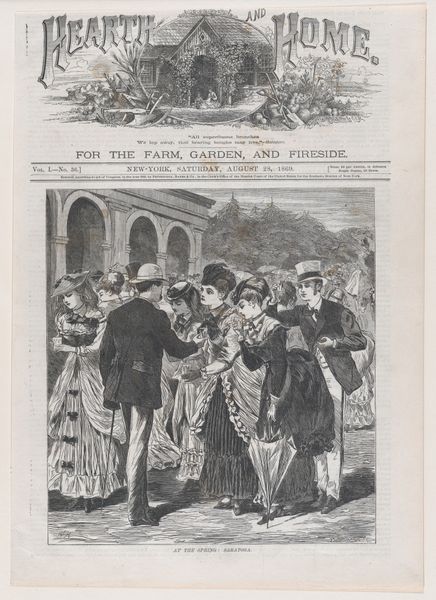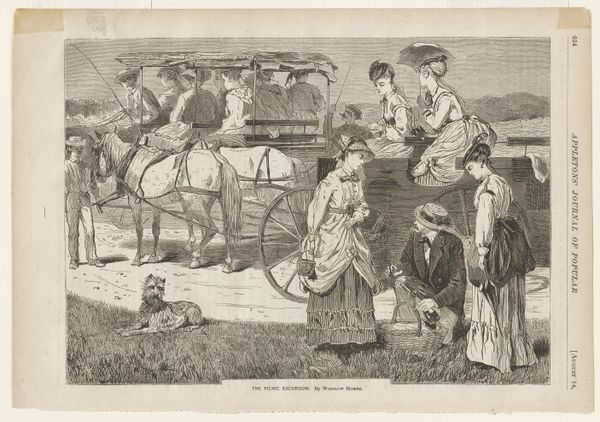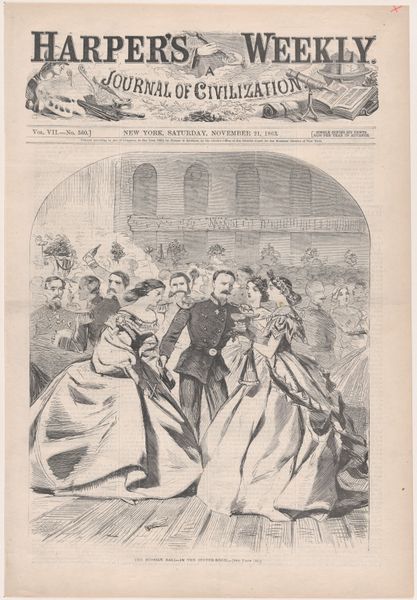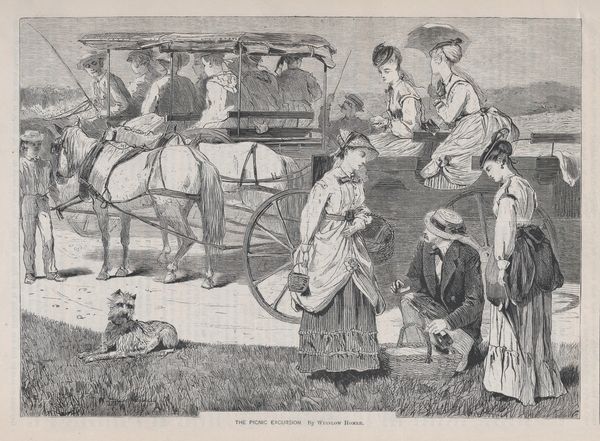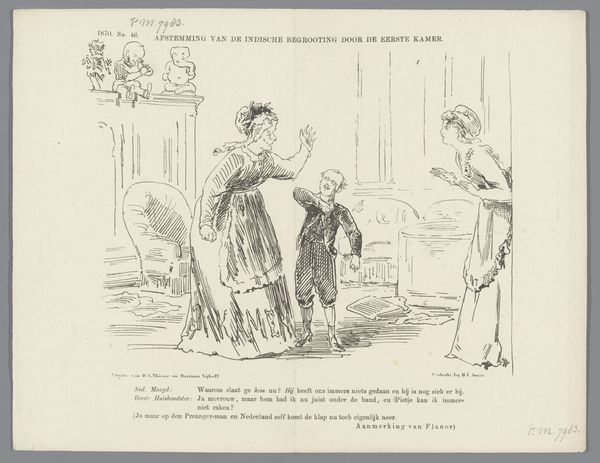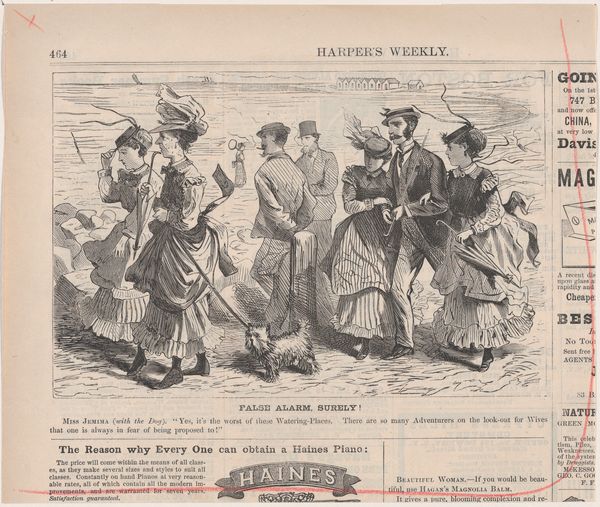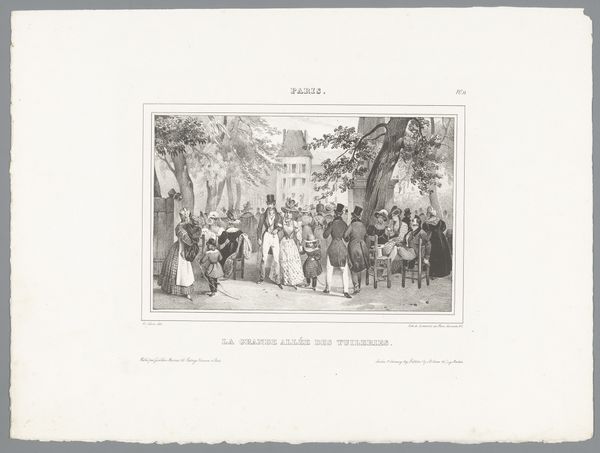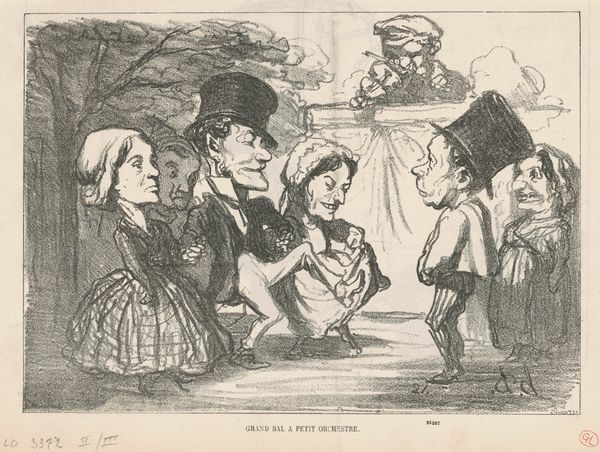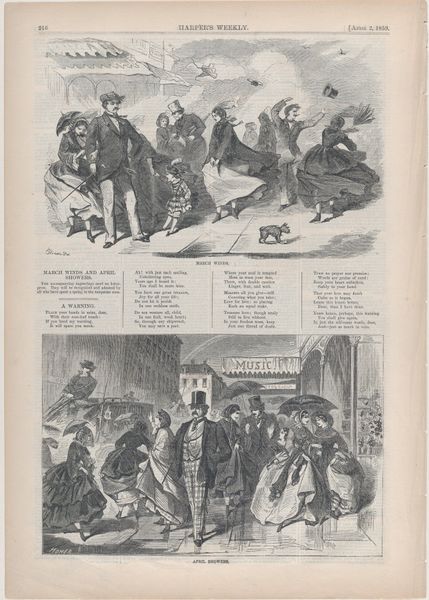
print, woodcut, wood-engraving
#
narrative-art
# print
#
woodcut
#
genre-painting
#
wood-engraving
Dimensions: 9 3/16 x 8 1/2 in. (23.3 x 21.6 cm)
Copyright: Public Domain
Editor: This is Winslow Homer's "At the Spring- Saratoga," a woodcut print from 1869, and it's teeming with detail! I'm immediately struck by the contrast between the fashionable figures in the foreground and the implied landscape behind them. How do you interpret this work? Curator: This piece, published in *Hearth and Home*, captures a scene of leisure and social interaction. It's tempting to see this as simple genre painting. But I'm interested in how Homer depicts class and gender. Editor: Class and gender? Tell me more. Curator: Observe how the figures, particularly the women, are adorned in elaborate dresses. Saratoga was a space for displaying wealth. Consider what it meant for women to be visible in the public sphere, though always within very specific parameters. What are they doing, and what does that say about their roles in society? Editor: Right. It seems like they're objects of display themselves. There’s a tension there; they’re present but perhaps not empowered? Curator: Precisely. Homer provides a glimpse into a society navigating its own transformations and gendered constraints. By studying images such as this one, what social dynamics become apparent? Editor: Seeing the print through the lens of gender and class gives me a much richer understanding. It's not just a scene; it’s a carefully constructed moment reflecting societal power dynamics. Curator: Indeed, art becomes a site where we question and re-evaluate accepted narratives and understandings.
Comments
No comments
Be the first to comment and join the conversation on the ultimate creative platform.
